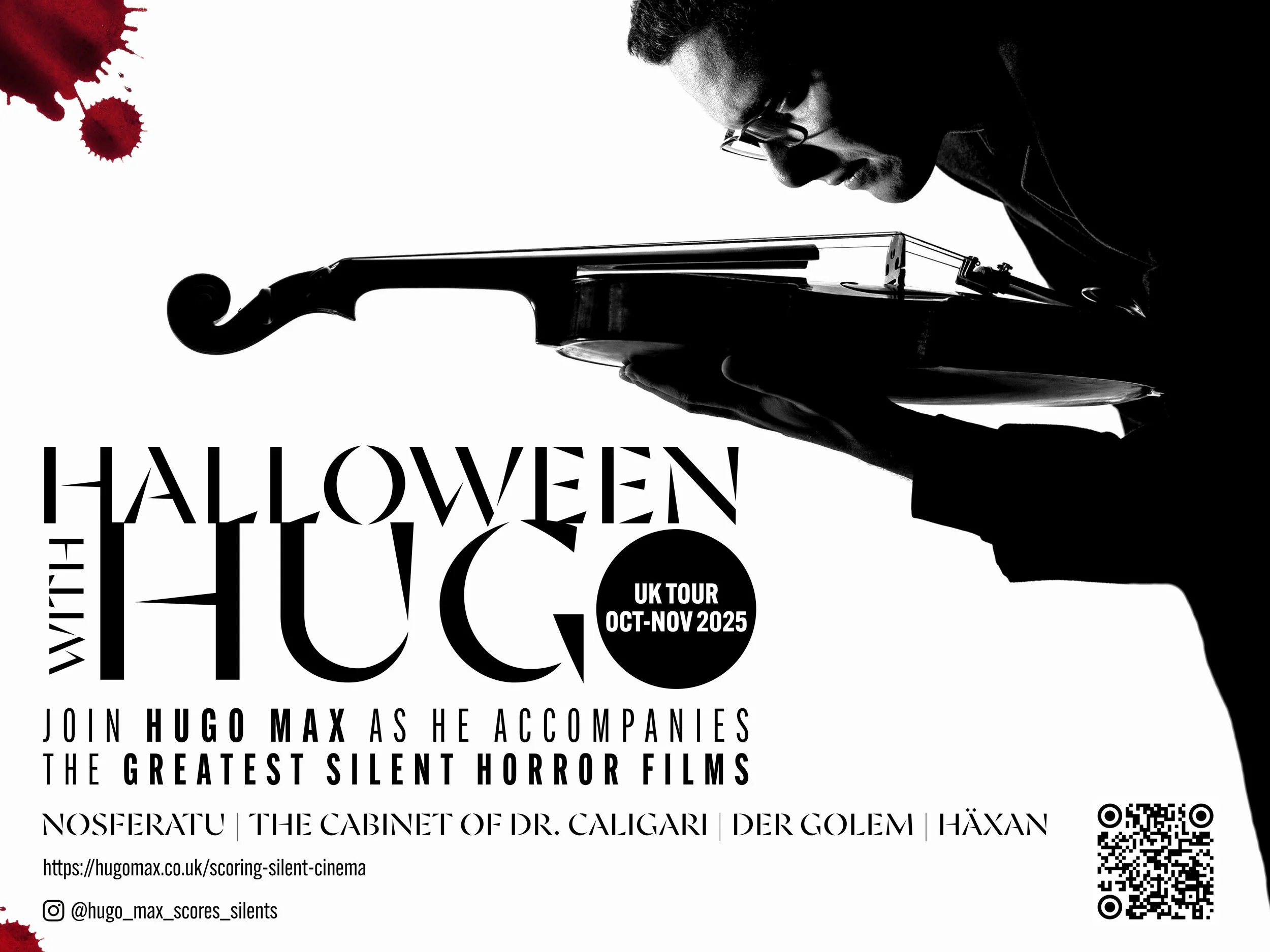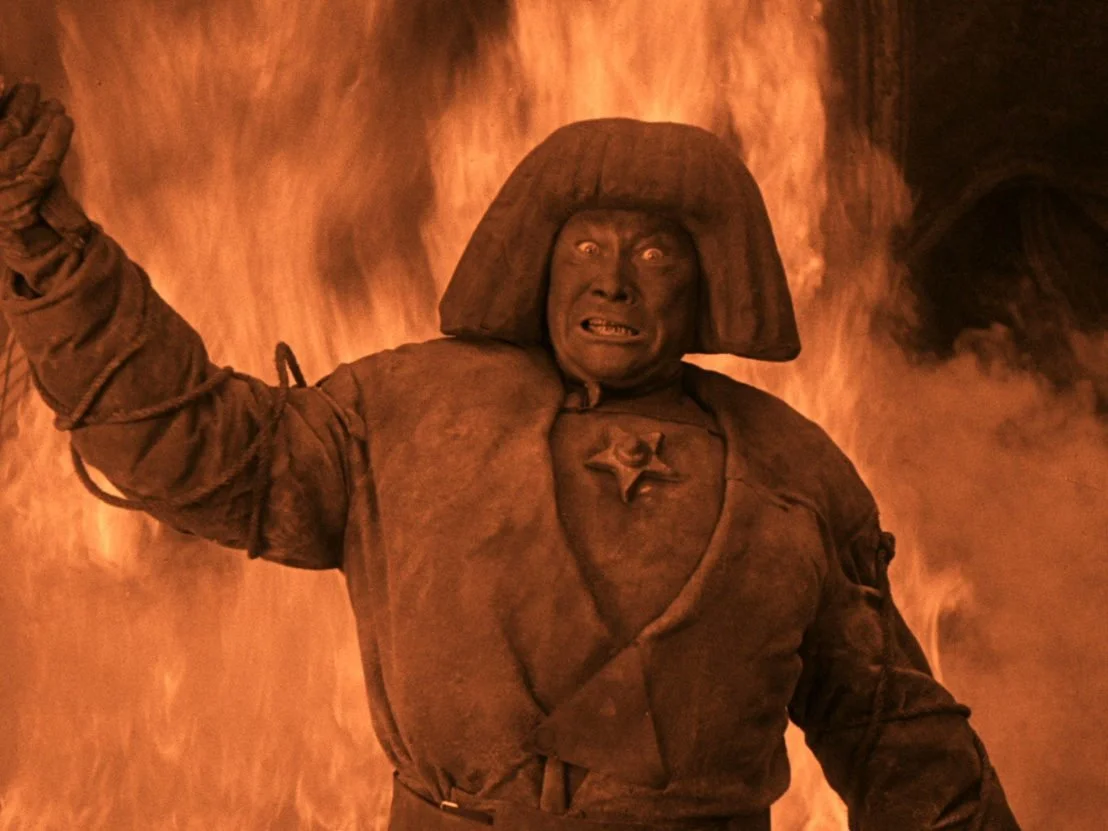The Films & The Scores
The Cabinet of Dr. Caligari (1920)
Robert Wiene’s visionary psychodrama features some of the most striking images in the history of cinema.
"The rich timbre of the viola perfectly captures the aura of Robert Wiene's The Cabinet of Dr. Caligari. My soundtrack translates the film’s angular painted shadows into unnerving melodies inspired by musical techniques that were evolving during the 1920s. The nefarious showmanship of Caligari invites theatrical and macabre sounds, in contrast with ghostly gestures evoking ‘the somnambulist’ who is compelled to act against his will."
Image courtesy of Eureka Entertainment
Nosferatu (1922)
"I first saw Murnau’s Symphony of Horror when I was nine years old. The film’s expressionistic images continue to haunt me, the chiaroscuro compositions tapping vividly into timeless subconscious fears.
“My improvisations on viola and piano draw inspiration from the leitmotifs and sound effects of 70s horror soundtracks and the languages of Second Viennese School composers contemporary to Murnau, also Jewish Traditional Music that informs my personal approach to creating a score for the film."
F. W. Murnau’s classic adaption of Bram Stoker’s Dracula.
Image courtesy of Eureka Entertainment
Häxan (1922)
Benjamin Christensen’s shocking study of witchcraft foreshadows the found-footage horror film.
“Benjamin Christensen’s Häxan must to be seen to be believed. Playing out as a lecture on witchcraft ‘made flesh’, the film foreshadows the found footage horror genre and features many of the most imaginatively realised and grotesque visuals of silent cinema history. My viola takes on the voice of the occult-obsessed lecturer(/director), possessed by the alluring darkness of the subject, wrestling with the film’s message of hierarchal corruption and its prevailing controversies.”
Image courtesy of Swedish Film Institute
Der Golem (1920)
Paul Wegener’s re-imagining of Gustav Meyrink’s novel blends the tale of Frankenstein’s monster with Jewish mysticism.
“My viola soundtrack takes inspiration from the gestures of expressionist painting evoked in the sequence of the Golem's creation and interweaves religious music with echoes of music from the 1920s.”
Image courtesy of Eureka Entertainment




